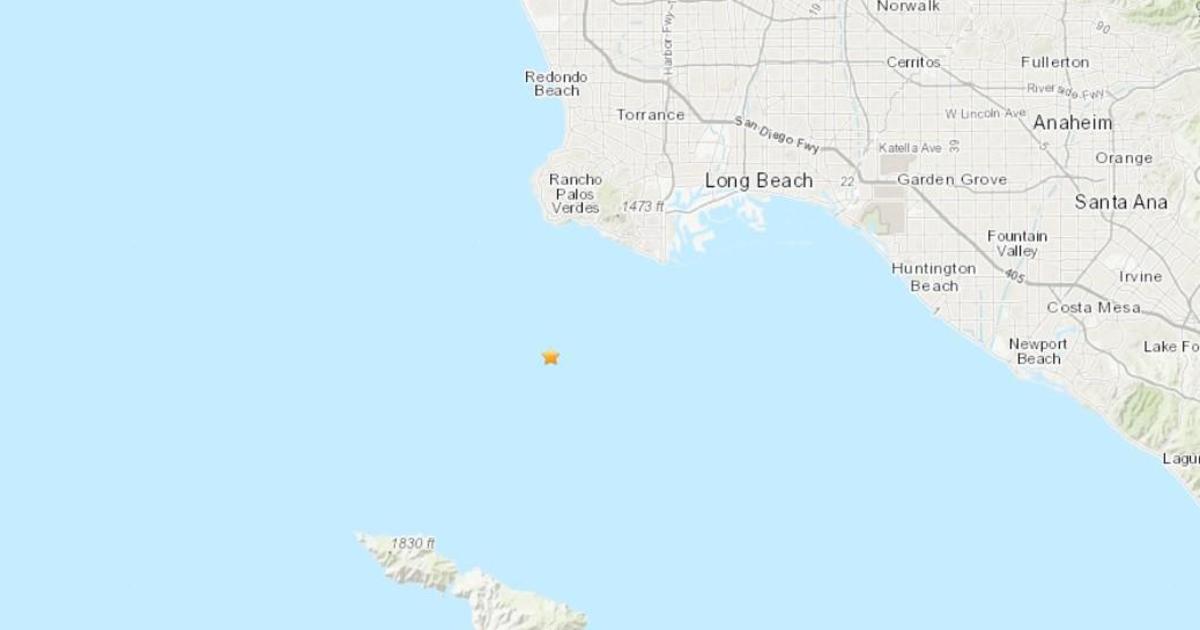CalTech Seismologists: Early Alert System May Give 30-Second Warning Before Major Quake
ENCINO (CBSLA.com) — Monday's morning earthquake renewed the debate over the funding of an early earthquake-warning system.
The system generally works by alerting people of excessive seismic activity a matter of seconds before the physical shaking can be felt, giving people an opportunity to prepare themselves, should they find themselves in unsafe circumstances. The system also alerts people as to the approximate magnitude of the earthquake, generally putting at ease any worries of immediate escalation during shaking.
A number of seismologists who did have access to the warning system during the quake that hit near the Sepulveda Pass early Monday morning said it worked, and that it was advantageous.
"I was sitting there at breakfast, and my laptop computer told me that shaking was coming, and then I felt it, and it was nice," seismologist Tom Heaton said. "We all know the drill; you feel the shaking, and you don't know if it's going to get bigger or smaller. (With) a system like this, you know instantly that it's not going to get bigger. It's just a routine Southern California earthquake."
The system, which was approved by Governor Jerry Brown when he signed a bill into law last September, never identified a funding source necessary to build and maintain it.
"At this point, it's absolutely about money," CalTech seismologist Lucy Jones said. "We need to come up with the annual expenses of maintaining the stations, running the software, getting the telemetry and, you know, a big earthquake tomorrow (means) the funding might show up the next day."
At CalTech, seismologists were happy with how well the system worked on Monday morning, and they discussed the accuracy and timing of their warning.
"The system gave us a couple seconds of warning, which is kind of what we'd expect at this distance," seismologist Robert Graves said. "The magnitude was a little bit off, but it certainly worked in terms of notifying ahead of time, before the shaking arrived."
While Monday's magnitude 4.4 quake provided a couple of seconds of warning through the system, Jones suggests that in a major quake, such as the Northridge earthquake that shook the Southland in 1994, the system could provide 30 seconds or more of warning before the physical shaking would actually be felt.
State Senator Alex Padilla of Van Nuys authored the bill to approve funding for the system, which was signed in 2013, says an early alert system can potentially save countless lives, particularly in a region famed in part for its intense seismic activity.
"We need to scrap and scrape from every source we can to deploy the sensors, to get the system up and running as soon as possible. It literally is something that will save lives in California." Senator Padilla said. "The technology has proven to work, and California is certainly the literal and figurative epicenter to seismic activity in the world. It's almost an embarrassment that we don't have the system up and running already."
Jones is also preparing a report for Mayor Eric Garcetti on potential upgrades from older, concrete buildings that are un-reinforced and could potentially be at risk in the event of a large earthquake. The prospect of work on these buildings, however, is at a standstill, as the debate over who would cover the costs of the upgrades continues.
"It's not something I can come in and do in a month," Jones said. "The technical issue is relatively easy, but how do you get appropriate funding structures for this?"



